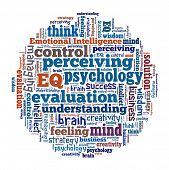Daily business can be like a rollercoaster. Filled with its ups and downs, leaving you to wonder, “What the heck is going on?” This, to some, is just a typical day at the office. However, different personalities handle stress differently. Although people react to stress differently, a human’s hierarchy of needs drives these reactions. Human needs consist of physiological need (health, food), safety needs (shelter, removal from danger), belonging (affection, being part of groups), esteem (self-esteem, esteem from others) and self-actualization (achieving individual potential). The most effective tool to use to get off the rollercoaster is your emotional intelligence.
Emotional intelligence is the ability or the capacity to be aware of, control and express one’s emotions; and to handle interpersonal relationships judiciously and empathetically. Emotional intelligence is comprised of two major components: 
Personal Competence. This is the individual’s self-awareness of his or her own emotions. It’s the awareness of one’s strengths and weaknesses and ability to self-manage, including emotional self-control, the adaptability/flexibility in changing situations and obstacles.
Social Competence. This is the individual’s social awareness and ability to show empathy and insight. Understanding others’ perspectives and feelings and appreciations of others’ strengths and weaknesses is big part of this.
The key is to understand the driving factors behind the issues. Effectively managing the situations and having a successful intervention depends on identifying what is driving the difficult behavior. Problematic situations and toxic aggressive behavior can be divided into four categories, narcissistic, rigid, aggressive and impaired:
Narcissistic. Narcissistic people tend to be preoccupied with their own importance and are grandiose. These people lack empathy for others and have little, if any, conscience. Although there are 4 different types of Narcissistic people (Grandiose Psychodynamic, Grandiose Learned, “Control Freak” and Antisocial) the strategies to handle them remain the same.
Rigid. A person with the rigid trait insists on doing things their way. People who have this trait can have a fear of being wrong and believe that their way is the best way.
Aggressive. A variety of factors can lead to aggressive behavior in managers & employees. Aggression can be broken down into five types. The five types of aggression include being ruthless, bully, frantic, irritable, or narcissistic. A ruthless aggressive person calmly goes after what he or she wants with the objective to get what they want. People with the bully aggressive trait tend to seek to intimidate others in order to dominate. People with the frantic aggressive trait are always hyper and pressured because their main focus is to avoid being in trouble and accomplish as much as possible. People with the irritable aggressive trait have difficulty modulating their stress level and are highly reactive to certain things; this can be caused for a variety of reasons. People with narcissistic aggressive trait tend to have a low and fragile self-esteem, which leads to eruptions of anger if self-esteem is challenged.
So, now I told you what to look out for, but how can emotional intelligence be used to handle these problematic situations or behavior?
If the toxic aggressive individual is your superior:
- Watch your back!
- Stay out of their way & do not let them see you are intimidated.
- Help them with their objectives.
- Help them see how a frantic pace may be inefficient
- Show deference. Play down you accomplishments.
- Avoid outshining them.
- Never criticize them.
If the toxic aggressive individual is your employee:
- Monitor individuals’ interactions with co-workers.
- Help them with their objectives/goals.
- Help them see how their frantic pace and aggressive attitude may not only be inefficient, but may also be hurting the company’s production and bottom line.
- Be a personal mentor and applaud efforts. (only in the beginning of the employees employment)
- If problems develop, then persist during employment take proper managements steps moving forward.
- If proper management steps & conversations fail, it may be time to start looking for a more positive/capable person for the position.
Although in this blog there are steps to help navigate toxic people at work with the use of your emotional intelligence, you must still keep in mind that you are unlikely to bring about wholesale personality changes in someone, but that’s not necessary. Rounding off rough spots and bringing greater flexibility, collaboration, and responsiveness to situations is all that is needed to make a significant improvement in the quality of the work environment and work output.
Sources:
www.changingminds.org/explanations/needs/control www.veybusinessjournal.com/topic/the-workplace/the tryanny-of-toic-managers
